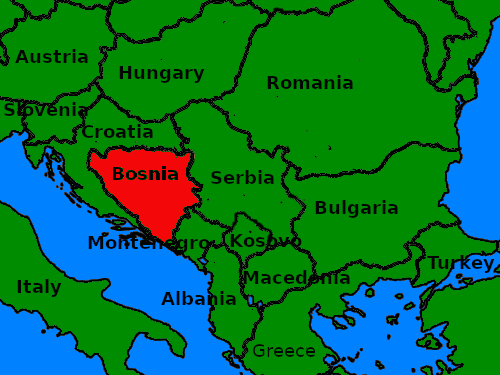
Circle the area on this map

A. The region takes its name from the Balkan Mountains that stretch through Bulgaria. In 1808, a German geographer used the mountain range to name the Balkan Peninsula. The Balkans generally refers to the present-day nations of Albania, Bosnia and Herzegovina, Bulgaria, Croatia, Greece, Kosovo, Montenegro, North Macedonia, Romania, Serbia, and Slovenia.
C. The peninsula in southeastern Europe borders southwestern Asia. Besides the Balkan nations, the peninsula includes small parts of Italy to the west and Turkey to the east. The region was settled over centuries by waves of various ethnic groups, including many coming from Asia.
D. The different empires that competed for the Balkans brought Roman Catholic, Eastern Orthodox and Islam to various parts of the region. Religious and language differences have divided the people of the Balkans and led to vicious wars and slaughters.
D. After a period of political and economic crisis in the 1980s, the constituent republics of the Socialist Federal Republic of Yugoslavia split apart, but unresolved issues caused bitter inter-ethnic wars in the 1990s. The nations that made up Yugoslavia are Bosnia and Herzegovina, Croatia, Kosovo, Montenegro, North Macedonia, Serbia, and Slovenia.